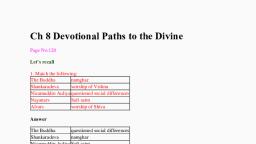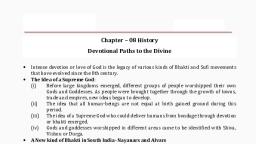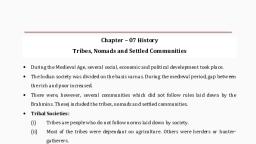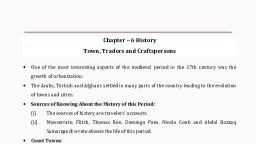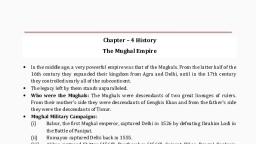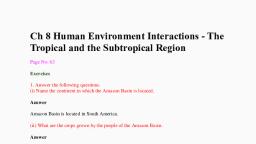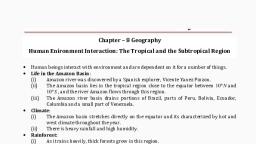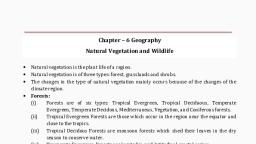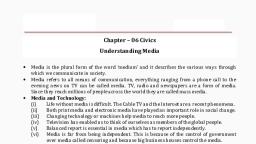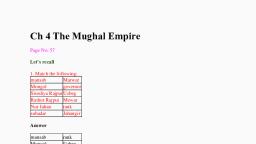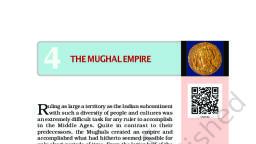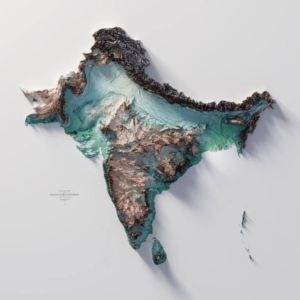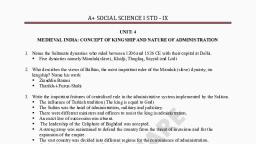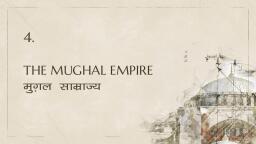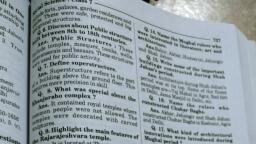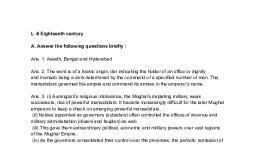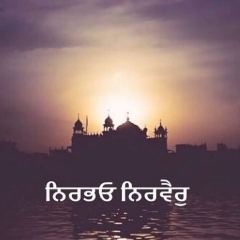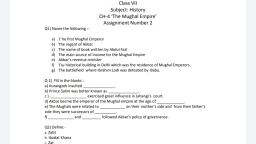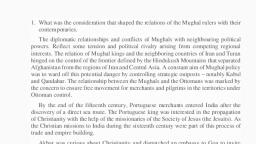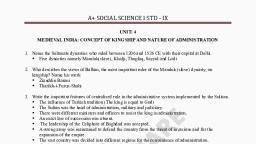Page 2 :
could govern a society composed of many religions, cultures and castes., 3. What were the central provinces under the control of the Mughals?, Answer, The central provinces under the control of the Mughals were:, (i) Lahore, (ii) Panipat, (iii) Delhi, (iv) Mathura, (v) Agra, (vi) Ajmer, (vii) Marwar, (viii) Mewar, (ix) Deccan, (x) Chittor, 4. What was the relationship between the mansabdar and the jagir?, Answer, Mansabdars received their salaries as revenue assignments called jagirs. Mansabdars did not, actually reside in or administer their jagirs. They served in some other part of the country while, the revenue was collected for them by their servants., Let’s understand, 5. What was the role of the zamindar in Mughal administration?, Answer, Role of the zamindar in Mughal administration:, (i) Zamindars were local headmen of villages or powerful chieftains appointed by the Mughal, emperor., (ii) They played a role of source in running of the administration of the Mughals., (iii) They collected tax on the produce of the peasantry which was the main source of income, available to Mughal rulers., (iv) In some areas the zamindars exercised a great deal of power and sometimes zamindars and, peasants of the same caste allied in rebelling against Mughal authority., 6. How were the debates with religious scholars important in the formation of Akbar’s ideas on, governance?
Page 3 :
Answer, (i) Akbar’s interaction with people of different faiths made him realise that religious scholars, who emphasised ritual and dogma were often bigots., (ii) The teachings by different religious scholars created divisions and disharmony amongst his, subjects., (iii) This led to the idea of sulh-i kul or "universal peace" which means tolerance and not to, discriminate between people of different religions in his realm., (iv) They framed a vision of governance around the idea of sulh-i kul focused on a system of, ethics honesty, justice, peace which was universally applicable., (v) This system of governance was later followed by Jahangir and Shah Jahan as well., 7. Why did the Mughals emphasise their Timurid and not their Mongol descent?, Answer, The Mughals emphasise their Mongol descent because Genghis Khan's memory was associated, with the massacre of innumerable people. It was also linked with the Uzbegs, their Mongol, competitors., on the other hand, they were proud of their Timurid ancestry, not least of all because their great, ancestor had captured Delhi in 1398. They also celebrated their genealogy pictorially, each ruler, getting a picture made of Timur and himself., Page No: 59, Let’s discuss, 8. How important was the income from land revenue to the stability of the Mughal Empire?, Answer, (i) The income from land revenue was the main source of income of the Mughal Empire., (ii) The Mughal empire was very large and therefore for running the administration and, maintaining law and order, a huge amount of finance is needed which comes from the revenue., (iii) The land revenue is also important for salaries of the soldiers and officials and welfare, works for the commons., (iv) Land revenue played a crucial role in the economy as well as administration of the Mughal, empire., 9. Why was it important for the Mughals to recruit mansabdars from diverse backgrounds and, not just Turanis and Iranis?
Page 4 :
Answer, (i) It was important for the Mughals to recruit mansabdars from diverse backgrounds and not just, Turanis and Iranis in order to provide stability to the empire., (ii) Moreover, the problems of common folks would be understood better by the people living, there., (iii) They came here to rule and to maintain the balance between the diversity of the country as, well as to respect it, they recruited mansabdars from diverse backgrounds., (iv) They also don't want the people to rebel against them on the issue of being a common, mansabdars or privilege to Turanis and Iranis., 10. Like the Mughal Empire, India today is also made up of many social and cultural units. Does, this pose a challenge to national integration?, Answer, Today, India follow a culture or tradition of "unity in diversity". People living here are united by, the heart and loved the diversity of their own country. They consider this as their own, motherland. Moreover, they got right to choose their own government and freedom to do what, they want without harming anyone which was not the case under Mughal empire. It do face some, challenge but it is like a drop in the sea. So, India is now integrated country with diversity as its, USP and never pose a challenge to national integration., 11. Peasants were vital for the economy of the Mughal Empire. Do you think that they are as, important today? Has the gap in the income between the rich and the poor in India changed a, great deal from the period of the Mughals?, Answer, Students need to do this by themselves to develop their thinking power and the way to express. It, will also help them in increasing their writing skills. Further asked, we will help you.









